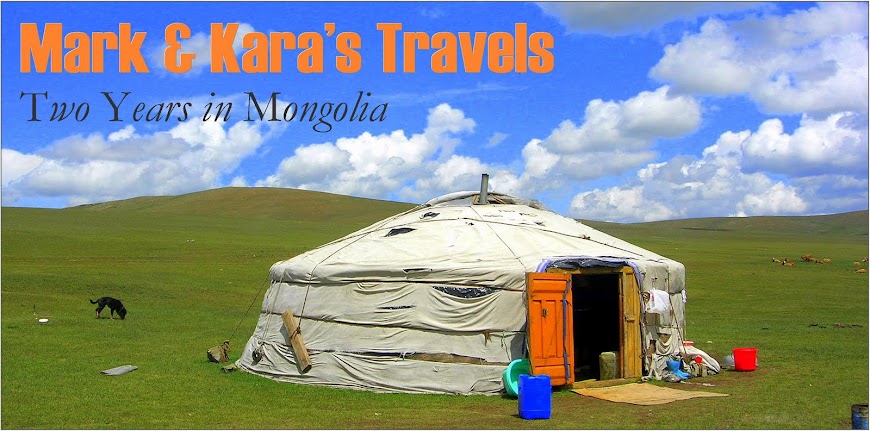Getting your hair cut isn't as simple as you might think. Not when it's supposed to be your first time, and when the symbolism of the event requires all friends/family to be there to witness and partake in said haircutting.
This past weekend Kara and I were fortunate enough to be invited to one of the "events" in traditional Mongolian life that we have had yet to witness. In fact, we were invited to two of these events on the same day. September 25th, 2010 was an auspicious day in the Mongolian calendar - one that would bring good luck to any activity you should choose to partake of. Thus, there were weddings and haircuttings and people moving and putting up gers and all manner of partying - since of course this day could only bring good!
Children in Mongolia traditionally wait a few years before receiving their first haircut. For girls, it is best to wait until they are 2 or 4 years old to have this ceremonial haircutting. For boys, they should be 3 or 5. What this means is that it is nearly impossible to tell the gender of small children under four. Little boys run around in pink coats with hair to their shoulders. Thus it's typically acceptable to ask someone what gender their child is...or if you're fortunate enough to see them running around without pants, a common occurrence in the summer, you might be able to avoid the confusion altogether.
Kara and I went to our first haircutting ceremony (which happened to be for my directors' daughter) with this background knowledge, and yet as so often happens in Mongolia, we found ourselves confused as to what was happening around us. This child was not 2 or 4, she wasn't even 6 or 8...this girl was 12!! How could this possibly be her first haircutting? This doesn't seem real? We're not getting the authentic experience! We later learned that this young woman never had her ceremony due to various reasons, and so today was her lucky day.
How it works is actually fairly simple. The young woman goes around the room from person to person. If it's your turn to cut her hair, you grab the scissors with attached blue hadak (ribbon) and bag for catching the hair. You take a small piece of hair, maybe a few inches long, snip snip, put the hair in the little bag, and as you hand back the scissors you also give the child 5000 tugriks (about $4). That's it! Your turn to be involved takes about 20 seconds! Of course this is preceded by about an hour of eating and drinking and greeting all the friends and family of the child.
Immediately following this party, we went to another home of my co-worker, who did have a little girl that fit the typical age range. We simply repeated the above procedure. All in all, it was a great experience and another thing we can scratch off the Mongolian To-Do List.
 |
| Kara doing the honors |
 |
| My co-worker, Naraa, handing over 5000 tugriks. |














